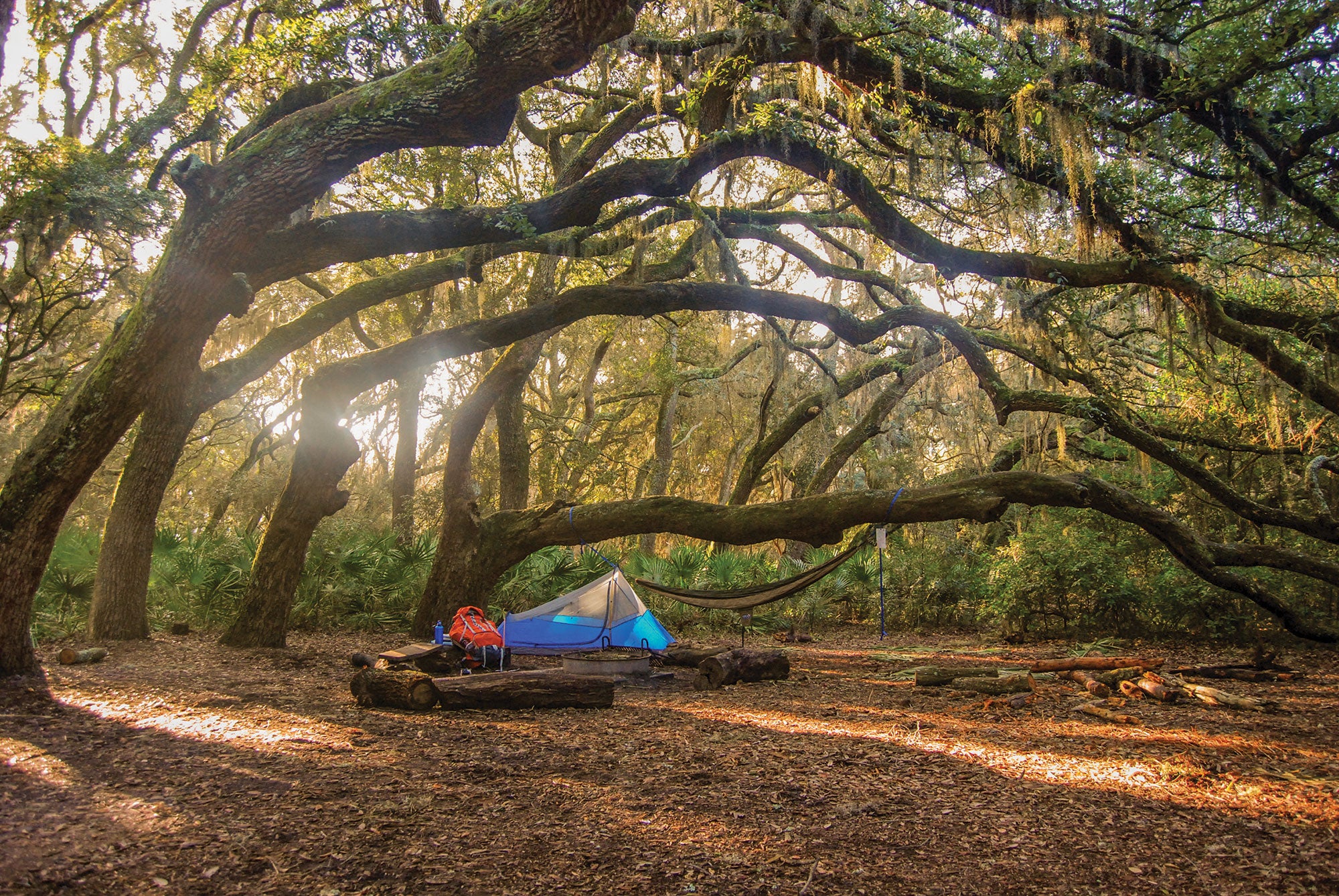Hiking Cumberland Island National Seashore in Georgia

'Photo by Ford Nixon'
Beach getaways are not my thing: Crowds, heat, and sitting around all day make me restless. But backpacking on a beach has me reconsidering my prejudice. I’ve hiked miles barefoot along a sandy shore without passing another human on Cumberland Island, a national seashore reserve tucked away on the southeast coast of Georgia. The place is quiet year-round—just 50,000 people visited in 2017—but even more so in January. That leaves the live oak forests, wide beaches, and clear, 60°F weather all for me and the wild horses that I see grazing in the dunes. The herd lives on the island year-round, and now I think they may be onto something.
Turn-by-turn
From Sea Camp
1) Follow the social trail .2 mile inland to a junction.
2) Head north on the Parallel Trail, ducking through a corridor of live oaks, to Little Greyfield Crossing at mile 1.9.
3) Split east to reach the beach, and hike 3.6 miles north on the sand to where the Willow Pond Trail emerges from the forest on hiker’s left. (Feel free to collect shells along the way; your permit allows it, as long as the shell is unoccupied.)
4) Follow the Willow Pond Trail 1.4 miles inland to Hickory Hill.
5) Next morning, trek south on the Parallel Trail from camp, taking it all the way back to Sea Camp at mile 12.1.
Campsite
Hickory Hill (mile 6.9)
Palmettos, pines, and large, sprawling live oaks shade this cozy spot. Claim one of the tent sites, and get freshwater at the well a mile north along the Yankee Paradise Trail. Reserve site online.
Wildlife
Poke around in the palmettos around dawn and dusk to spot armadillos foraging. For the feral horses, look in the dunes, where they munch on the grasses. The herd of roughly 150 is likely descended from horses of the British occupation. Beginning in May, some 500 loggerhead sea turtles will build their nests on the empty beaches (don’t approach them, of course).
History
Park visitation numbers be damned, humans have been drawn to Cumberland’s seclusion and scenery for centuries. Case in point: the ruins of the Dungeness Mansion, occupied by the British during the War of 1812 and later owned by Andrew Carnegie. Explore it by linking the River Trail and Main Road 1.7 miles south from the trailhead. From camp at Hickory Hill, take the Yankee Paradise and Duck House Trails 2.2 miles to visit the Plum Orchard Mansion, built in 1898 and also occupied by the Carnegies.
DO IT Trailhead 30.7643, -81.4697; a 45-minute ferry ride east of St. Marys ($28 round-trip) Season Year-round Permit Required ($9); obtain from the visitor center or online. Custom map ($15) Contact
Distance 12.1 miles (lollipop-loop)
Time 2 days
Difficulty 2